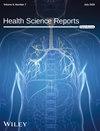A Cross-Sectional Study of Patients Satisfaction With the Pharmacy Services at the 108 Military Central Hospital: Determinants and Implications
Abstract
Background and Aims
Patient satisfaction is a critical metric for assessing the quality of pharmaceutical services in healthcare systems. This study aims to build a questionnaire with various items to comprehensively evaluate patient satisfaction with pharmacy services at the 108 Military Central Hospital and to identify key influential factors in their perception.
Methods
The cross-sectional survey was conducted from August 2023 to October 2023. The face and content validity were assessed by experts. The questionnaire's internal consistency (Cronbach's alpha) and construct validity (exploratory factor analysis) were explored. Multivariate linear regression was used to seek determinants.
Results
A total of 457 patients were included for synthesis. The final version of the questionnaire, which had 22 items grouped into four factors (attitude and professional capacity of pharmacy staff, accessibility and transparency, services performed, and infrastructure), showed high consistency and validity. General satisfaction was average (4.09 (SD = 0.628) out of a maximum score of five), with the factor having the lowest score of pharmacist consultants and drug prices despite being the leading national hospital. However, the two factors having the most substantial influence coefficient on satisfaction were the infrastructure (0.433), pharmacy attitude, and professional capacity (0.386).
Conclusion
The findings based on the comprehensive questionnaire with 22 items grouped into four factors showed that there were available determinants that needed improvement. Enhancing the quality of the strongest impact aspects of patient satisfaction should be done comprehensively and synchronously. In the case of limited resources, prioritizing actions in phases of time could make them more actionable and beneficial.

 求助内容:
求助内容: 应助结果提醒方式:
应助结果提醒方式:


